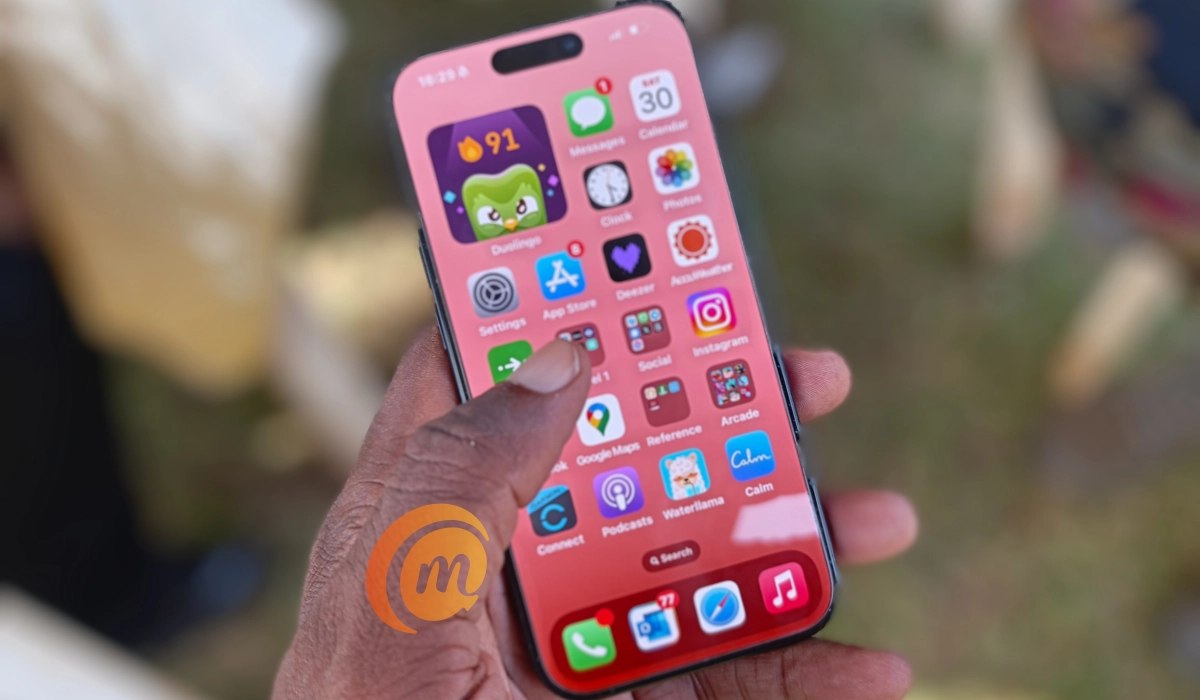MicroLED displays are the future, combining the best features of OLEDs and LCDs, promising efficient, high-quality visuals for future cell phones and other devices. Which is why Apple making a move to switch to them, makes sense.

A MicroLED display — also known as micro-LED, mLED, or μLED — is a new type of display that is currently in development for deployment in smartphones, tablets, laptops, and other computing, gaming, and entertainment devices. It consists of arrays of microscopic LEDs forming individual pixel elements. These tiny LEDs directly create color pixels, offering multiple advantages over the LCD and OLED displays that you are used to.
Table of Contents
Advantages of Micro-LED
Contrast and Response Times: Compared to LCD technology, MicroLED displays provide better contrast and faster response times.
Energy Efficiency: They significantly reduce energy requirements while offering pixel-level light control and high contrast ratios.
Longer Lifetime: The inorganic nature of microLEDs allows them to produce brighter images with minimal risk of screen burn-in, something that often happens with OLED panels..
Speed and Modulation: MicroLEDs can achieve high-speed modulation, making them suitable for 3D/AR/VR displays.
The above are some of the biggest features of MicroLED display panels.
What MicroLED Displays are used for
MicroLED displays have a wide range of applications:
- Wearable Displays for 3D/AR/VR: MicroLEDs are ideal for high-speed three-dimensional/augmented reality/virtual reality (3D/AR/VR) displays, providing immersive experiences in compact wearables.
- Large Flat Panel Displays and TVs: MicroLEDs offer high brightness, contrast, and energy efficiency, making them suitable for large flat panel displays and TVs. Samsung and Sony already sell microLED “cabinets” that can be tiled to create large displays of any size.
- Automotive Heads-Up Displays (HUDs): MicroLEDs enhance automotive HUDs, providing critical information to drivers without obstructing their view.
- Pico Projectors: These portable projectors require high brightness, and microLEDs fit the bill for compact, powerful projection.
- Visible Light Communications (Li-Fi): MicroLEDs can serve as light sources for Li-Fi, a technology that uses visible light for wireless communication.
MicroLED vs OLED
For years, debates have raged over which is better between AMOLED and LCD displays, and the general consensus is that OLED panels have the edge over LCD products. With MicroLED displays joining the scene, it comes with several advantages over both. Let’s look at the differences and respective advantages and disadvantages between MicroLED and OLED displays.
OLED panels use organic materials that can degrade over time, while MicroLED panels utilize inorganic materials, which are more stable and durable. As such, MicroLED is more durable and longer lasting.
OLED have larger pixels. As the name indicates, MicroLED panels have smaller pixels, allowing for higher resolution and pixel density.
While OLED panels provide deep blacks due to individual pixel control, MicroLED promises higher brightness and a wider color gamut resulting in better color accuracy.
Lastly, OLED panels are known to be susceptible to screen burn-in over time. MicroLEDs do not have this problem.
Disadvantages and issues
There are two main issues that need resolving. They are:
Manufacturing Complexity: Part of the challenges of producing microLED displays is how intricate and costly the process is. Development work is ongoing to resolve these issues
Size Constraints: Miniaturizing microLEDs for smartphone screens remains a challenge that early adopters will have to resolve first before this new technology becomes ready for deployment in cell phones.
Apple is investing in MicroLED for the iPhone
Apple is convinced that MicroLEDs are the future, and they want those displays on their iPhones and iPads. Which is why the company has been quietly working to develop its own MicroLED displays. Samsung and LG have been the companies behind the displays used in Apple iPhones and iPads. It looks like Apple wants to bypass them this time and be directly involved in the design and production of their own MicroLED displays. There is no doubt that if they succeed at this, it will be a significant blow to Samsung and LG.
So are Samsung and LG
But it isn’t only Apple that is a believer in the gospel of MicroLED display. Both Samsung and LG have been carrying out microLED research and development, too, for a while. Neither of them is resting on their oars and they intend to be ready to meet demand when the industry begins its swing from OLED and LCD to MicroLED.
For now, MicroLED research is expensive business and only companies with deep chests are involved – pretty much the trio of Apple, Samsung, and LG. Who will achieve the required breakthrough first? It is difficult to tell, at this time. Only tie will tell.